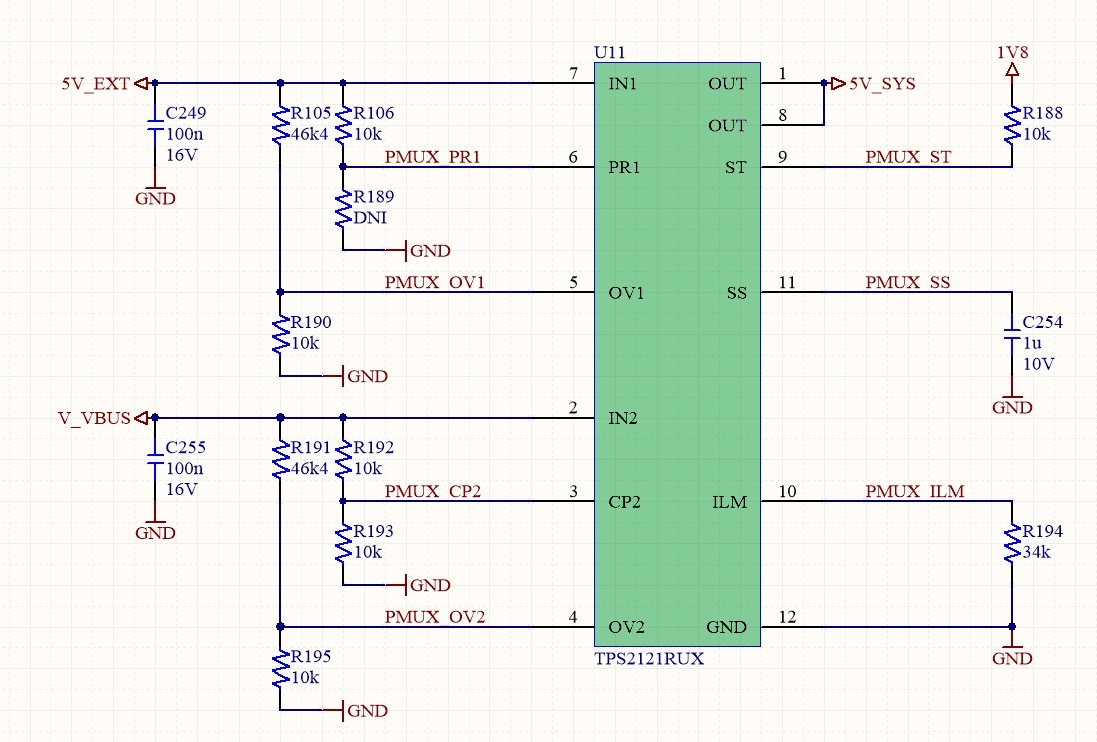Other Parts Discussed in Thread: TPS22916, TPS56C230, TPS62825
Dear *,
we want to use TPS2121 in a design where our device can be powered from external 5V or USB 5V , ILIM will be set to 3A.
Our device is a USB only device ( Type-C UFP).
As we know we have to have a slew rate limiter on USB VBUS pin because the capacitance is from 1uF to 10uF.
Currently we have VBUS connector pin -> 1uF capacitor -> TPS22916CNYFP ( as slew rate limiter ) -> at the output of the switch TPS22916CNYFP we have 100uF ELCO capacitor.
1)
In new design we want to use TPS2121 for power muxing, but the TPDS2121 also has a SS function , can this function replace the TPS22916CNYFP ?
2)
can we put only a 1uF to 10uF capacitor on input of TPS2121, it this enough ( max current 3A)?
can we put a 100uF capacitance or more on the output?
Best Regards,
David.


